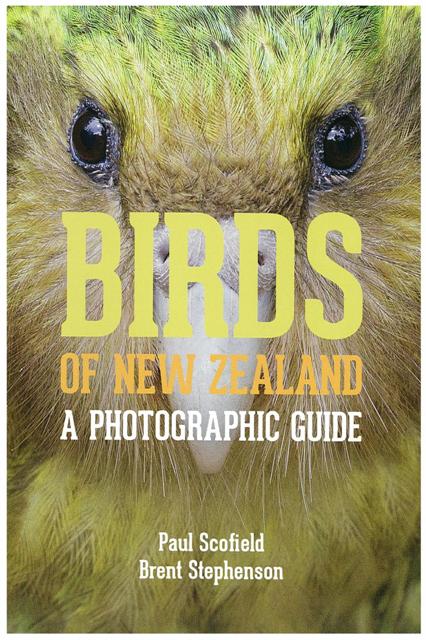Definitive guide to New Zealand Birds released
A new photographic guide to New Zealand birds is one of the most definitive guides ever produced in the country.
Published by the Auckland University Press, Birds of New Zealand: A Photographic Guide, by leading ornithologist Dr Paul Scofield and avian photographer Brent Stephenson, is the definitive introduction to the identification and behaviour of our country’s extraordinary and popular bird life.
“New Zealand is truly a land of birds,” says author Dr Paul Scofield, “with no naturally occurring terrestrial mammals. Birds are the commonest wild animals that New Zealanders will see outdoors – in the bush, taking the dog for a walk or going to the beach.
“When our national parks and recreation facilities are created and designed, birds are taken into account more than anything else and increasingly tourism is benefitting from our endemic birdlife.”
Birds of New Zealand: A Photographic Guide covers all 365 bird species found today in New Zealand and its offshore islands.
Before the arrival of humans, New Zealand birds were an extraordinarily diverse group. Eleven endemic (or unique to New Zealand) families of birds existed here, with six of these still around today – kiwi, New Zealand parrots, New Zealand wrens, New Zealand wattlebirds, New Zealand creepers and stitchbirds.
When humans arrived, hunting, habitat destruction and introduced mam¬mals had apocalyptic ill-effects. Consequently, 61 bird species became extinct and 77 are currently threatened with extinction, some critically so. Many are now confined to offshore islands without predators and New Zealand has become a world leader in the techniques required to bring severely endangered species back from the brink of extinction, including the eradication of introduced mammals.
There have also been additions to our avifauna, including more than 100 species introduced from northern Europe since 1850 brought both for sport and for a connection with the settlers’ homelands. This has meant that in urban and modified rural habitats the most common species seen each day are those introduced from northern Europe.
Birds of New Zealand includes all birds that occur naturally, those that have estab¬lished wild populations and all rare visitors. Each entry is dedicated to a single species, and includes a brief introduc¬tion, new photographs, a distri¬bution map and sections on Identification, Separation from Similar Species, Vocalisations, Distribution, Breeding Biology, Biometrics and Taxonomic Notes, which include Māori, English and scientific names.
Paul Scofield is the Senior Curator Natural History at Canterbury Museum. He is a leading New Zealand ornithologist. He has watched birds since he was a child in Auckland and has travelled extensively throughout the world studying birdlife from the Arctic to the Antarctic. He currently works on the conservation biology of endangered seabirds and specialises in Albatross and petrel biology. In 2006, he authored a landmark field guide to the Albatross and Petrels of the world. Much of his recent work has been researching the lives of New Zealand’s extinct species and he has been involved in ground breaking work using ancient DNA and the analysis and interpretation of the relationships of the extinct fauna.
Top nature photographer and birding tour leader Brent Stephenson also started a lifelong love affair with birds very young. Brent was one of the first nature photographers to start using digital photography in New Zealand and he has amassed a huge portfolio of images. His main passion is seabirds and this was strengthened by his involvement in the rediscovery of the supposedly extinct New Zealand storm-petrel in 2002, and then in the John Ridgway Save the Albatross Voyage (2003–4), sailing from New Zealand to the Falkland Islands.
--ENDs--
